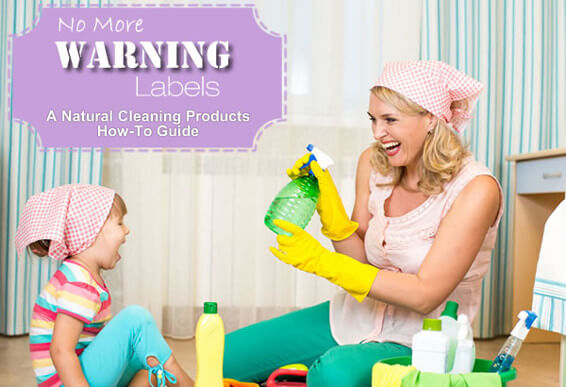
Although cleaning your home with products such as bleach or ammonia can be highly effective, with enough exposure, it can harm your nervous system, not to mention the battle of keeping it "out of the reach of your children."
If you knew how to clean your entire home using nothing but safe and natural cleaning products, would you make the switch? What if I told you that the result are as good or better than harmful chemicals?
Sanitize Without Using Bleach
Mixing equal parts of hydrogen peroxide and vinegar can make a powerful sanitizer. Use this in the kitchen, bathroom, or any room to kill germs without the harshness of bleach. This is the most important cleaner, because it kills the germs and bacteria in your home.
Spray this combination on your counters and don't wipe it away after to maximize your sanitation benefits.
In addition to sanitizing, you can use a variety of natural products to clean, deodorize, and shine. Read about the 4 rooms in your house that can benefit from natural cleaning products:
1. Living Room
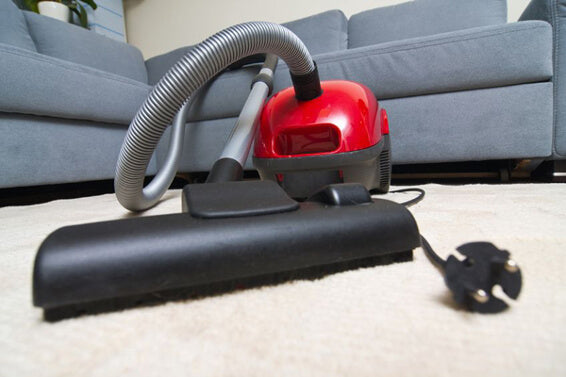
Carpet: Sometimes odors can permeate into the carpet and can be difficult to get rid of. Vacuum your carpet first, then dust your carpet liberally with DE and leave it for about 24 hours.
Hardwood floors: The tannic acid from boiling water with two tea bags makes hardwood floors shine. The cloth you use only needs to be damp to work, allowing the floor to dry more quickly.
Wood polish: Use a soft cloth and dab some olive oil on it and use on wooden furniture.
Couches: Look for the fabric tag before applying any sort of cleaning agent.
"W" means a water-based detergent
"S" means dry cleaned or cleaned with other non-liquid detergents
"WS" can be a water-based or non-liquid cleaner
"X" vacuumed or professionally cleaned
"O" means organic material and should be washed in cold water
This article from the San Francisco Gate offers cleaning ratio for ¼ cup warm water, ½ tablespoon natural liquid soap for couches with fabric and synthetic upholstery.
For leather upholstery mix a ½ cup of olive oil and ¼ cup white vinegar into a spray bottle. Shake to mix the ingredients together.
Deodorizer: Fill a small saucepan with ¾ full of water and add any number of your favorite scents.
Natural Deodorizing Recipe
- 4 sprigs of fresh rosemary
- 1 tsp vanilla extract
- 1 sliced lemon
You can mix and match your favorite fruits, herbs, spices, and extracts for your ideal recipe.
Spills: Pour diatomaceous earth on a spill and leave it for 2 to 24 hours then vacuum or sweep up afterwards. For especially vicious stains, use hot soapy water to scrub the stain.
Walls: For stubborn grime, scuffs, and marks, mix ¼ cup with 1 tablespoon of water (or to desired consistency). Scrub walls with rag on painted walls or ceramic tile. Take another clean, wet cloth to wipe away the scrub and dirt.
2. Kitchen
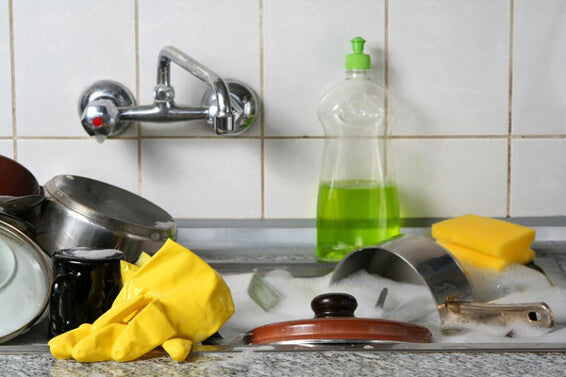
Stove: Pour a shallow layer of boiling water across the top. After 5 minutes take steel wool or scrub pad and remove stains via elbow grease. (Check instructions for ceramic and induction stove tops.)
Dishwasher: You can use vinegar as a rinse agent. Place it in the "rinse agent" compartment or add 1-2 cups of vinegar to the bottom of the dishwasher. The Miele Operating Instructions recommends against using vinegar with an acidity content higher than 5 percent to prevent damaging the dishwasher.
Sink: You can deodorize the sink by dropping one of your favorite fruit rinds (grapefruit, lemon, lime) into the garbage disposal.
Floor: For linoleum or other similar floors, use a vinegar and water solution of ½ cup of white distilled vinegar to ½ gallon of warm water.
Refrigerator: Throw out any old or rotten food and put in an open jar of DE to freshen up the fridge.
Utensils: Mix diatomaceous earth into a paste using a DE and a few drops of lemon juice, vegetable oil and a squirt of dish soap to make your utensils shine and remove hard water stains.
3. Bathroom
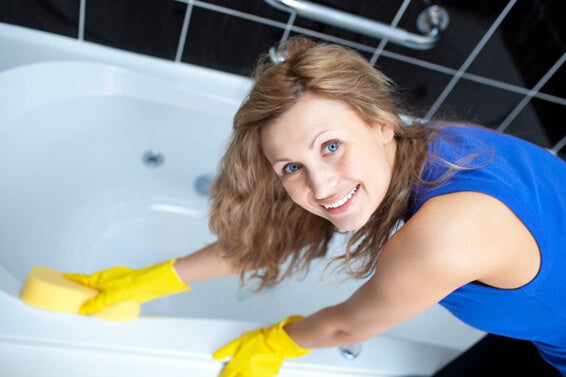
Sink: Mix the diatomaceous earth with a little lemon and vinegar and scrub your bathroom sink and counters.
Tub: Faucets in the tub can develop hard water stains. To combat this, cut a lemon in half and rub it on the faucet until you can see the shine coming through.
Toilet: Sprinkle baking soda in the toilet and let it sit for a few minutes for scrubbing it with a toilet brush.
Mirror: Mix about two tablespoons of white vinegar, lemon juice, or club soda in a gallon of water. Mixture can be used in a spray bottle for best results.
4. Bedroom
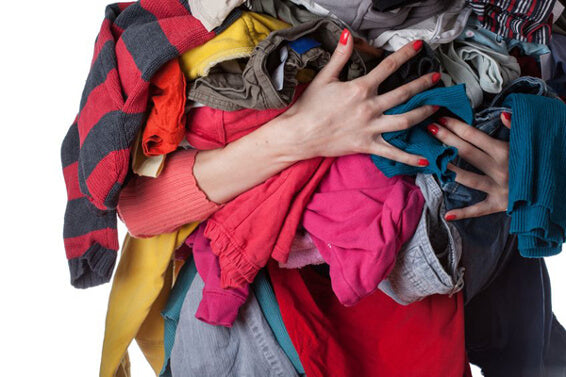
Drawers: Place a container of DE in with a lid on top. Poke holes in the lid that are at least a quarter inch wide. Then place this container in one of your drawers.
Clothes: You can make a homemade fabric softener using the following ingredients:
- 2 cups of Epsom salt
- 20-30 drops of your favorite essential oil
- ½ cup baking soda
Remember to comment below and let us know about your favorite green-clean recipes.


